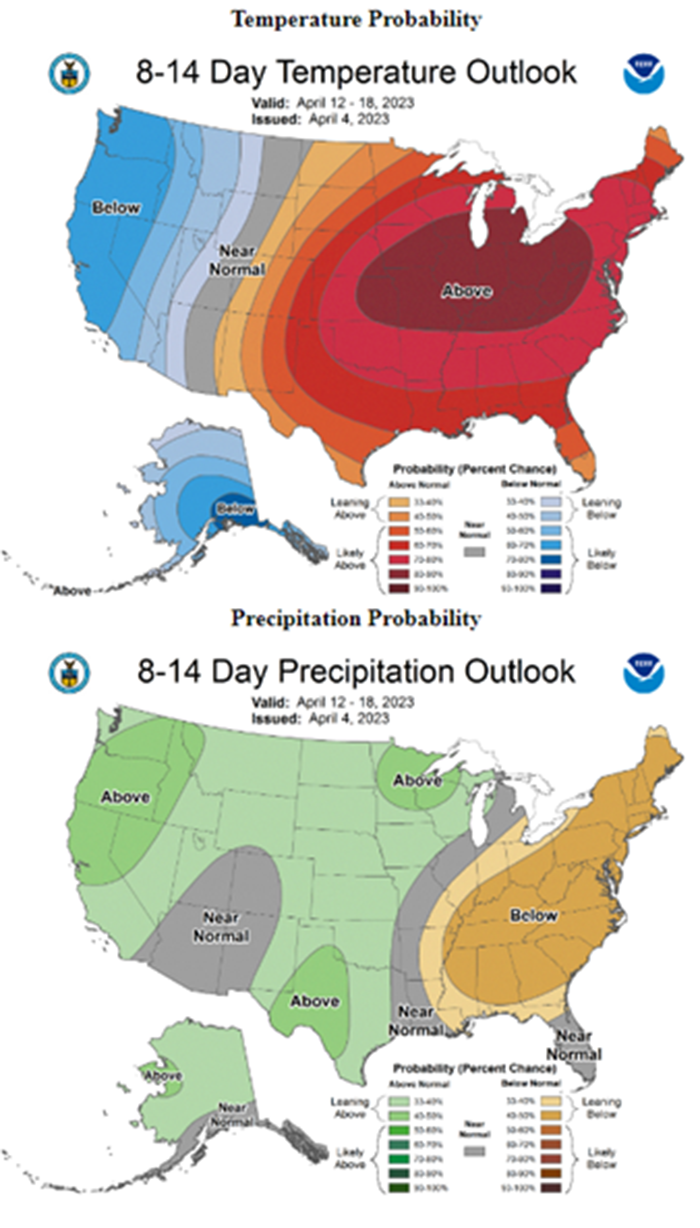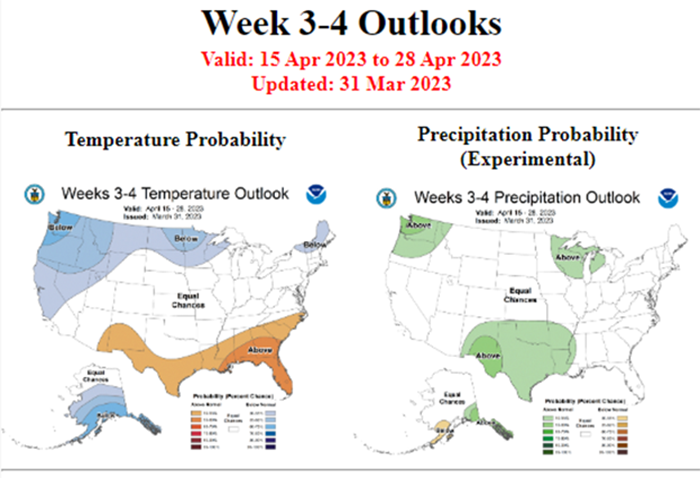
It’s no secret that weather is impacting markets heavily right now. But why is that?
The key finding from last week’s USDA Prospective Plantings report is that a significant chunk of expanded corn and soybean acreage expected in 2023 is going to come from the Northern Plains and Upper Midwest – specifically, North Dakota.
And as the peak planting window begins to open for the Heartland, favorable weather ensures that crops will be planted and – Mother Nature willing – yield prospects will be at least partially cemented. Conversely, unfavorable weather leads to a higher chance of prevent plant acres, planting delays, and negative yield impacts due to unfavorable planting conditions.
There is a lot at risk here – global grain and oilseed supplies remain historically tight after multiple years of global crop shortfalls and Russia’s invasion in Ukraine, fanning the flames of inflationary pressures currently at play in the economy. But at the same time, global usage rates for these agricultural commodities continues to grow.
That means that U.S. farmers will need perfect weather and perfect crops to harvest this fall to give global supplies any fighting chance of restocking and prices any hopes of easing back from inflationary pressures. Any deviation from good weather forecasts will likely trigger an uptick in prices over the next several weeks.
And unfortunately, there is already some reason to think that this spring will be a rough planting season in the Upper Midwest. USDA’s Office of the Chief Economist published its Weekly Weather and Crop Bulletin yesterday and a few key items stuck out to me.
Current weather conditions
First, North Dakota and Minnesota remain heavily blanketed under abnormally high snowpack, with over two feet of accumulation still resting in some parts of North Dakota as of last Saturday. Most of Minnesota has over a foot of snowpack and areas of Northern Wisconsin still have up to two feet of snow on the ground.

Second, soil temperatures may be rapidly warming across the Corn Belt, but the distribution isn’t exactly even this year. The Southeast and Southern Midwest regions are running about three weeks ahead of normal spring weather. Soil temperatures in Central Illinois across Southern Indiana and Ohio are rapidly approaching the critical 50-degree benchmark that allows for corn germination.
But other key corn-growing regions remain either blanketed under snow or are too wet and cold to allow for favorable corn development at this point. Soil temperatures in Nebraska and Iowa remain at or close to freezing, while the heavy snowpack is keeping soils in the Northern Plains and Upper Midwest in tundra-like condition.

Third – even though the Eastern Corn Belt is not worried about drought right now, it doesn’t mean that corn acres are no longer susceptible to dry weather impacts. Drought conditions continue to persist in the Plains, particularly in Eastern Nebraska and Western Iowa, which are traditionally heavy corn producers.

Looking ahead
The current forecasts are a bit of a mixed bag for growers across the Heartland. Since North Dakota is planning significant corn, soybean, and canola acreage expansion this year, weather in the Northern Plains will be a significant driver of price activity.
In the short run, the Upper Midwest could see a favorable chance of melting snowpack. NOAA’s 6-10-day outlook is finally showing higher chances for warmer weather across the Heartland through the end of next week. The West Coast will keep battling cooler weather during that time. Dry weather is expected across most of the Heartland through late next week, which should favor early planting progress in the Eastern Corn Belt.

NOAA’s 8-14-day outlook shows the warm temperature trends lingering in the Heartland, but especially in the Eastern Corn Belt, through late next week. Below average precipitation trends will keep early planters rolling in the Eastern Corn Belt. But the precipitation outlook for the Upper Midwest and Plains will turn soggy through the third week of the month, slowing hopes for early planting progress in those regions.

But as the month of April comes to a close, cool weather is likely to settle back into the Upper Midwest, which could slow melting speeds for the abnormally heavy snowpack currently settled over the region. The risk of delayed planting speeds in the Upper Midwest increases the risk of prevent plant acres – which could limit corn and soybean expansion plans laid out by USDA late last week.

Extended forecasts continue to trend abnormally cool for the Upper Midwest as the peak planting window opens across the Heartland. Warm and dry weather will likely support rapid planting paces through the Eastern Corn Belt, but delays are more likely further north as well as in the Central and Southern Plains if growers decide to wait for more soil moisture.

Kansas and Nebraska are both expected to plant higher corn acres this spring, despite higher fertilizer costs than the Corn Belt and more expensive corn seed prices that have a harder chance developing favorable yields in the absence of soil moisture. But the persistent drought tendencies in the Plains this spring could deter corn acres in favor of more drought-hearty crops.

Mother Nature is packing all of the punches this spring. USDA just started releasing Crop Progress data this week, which typically generates a decent amount of price gyration. But expect weather to continue to influence prices over the coming weeks. A lot hangs in the balance of these forecasts and if weather conditions don’t improve, we could be looking at another year of tight grain supplies and persistent inflationary pressures.
Read more about:
WeatherAbout the Author(s)
You May Also Like






